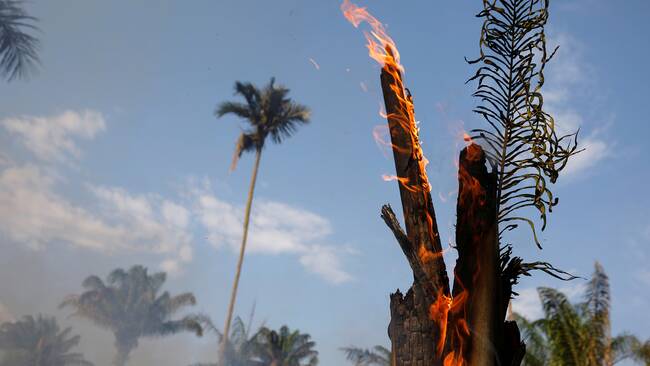Karin Lexén points out that a tropical rainforest cannot by definition burn.
- It has two periods, one wet and one wet. Just that it is burning is a sign that it has become drier. The fires are in themselves an expression of drastic conditions in the Amazon due to felling, which has affected the rainforest environment.
The fires have both long-term and short-term effects on the environment, explains Torsten Krause, associate professor at Lund University's Center for Studies of Sustainable Social Development. He has, among other things, done research in the Colombian and Ecuadorian Amazonas.
- The fires not only emit carbon monoxide, they also destroy forests that absorb carbon dioxide. They destroy the habitat of a variety of species and indigenous peoples. They pollute the rivers.
Not unusualAmazon fires are not uncommon at this time of year. It is a dry period and in order to grow on the nutrient-poor soil, forest areas have traditionally been burnt down. What is new is the scope.
In the past, farmers were only allowed to cut down a certain amount of forest, but under President Jair Bolsonaro, many exploit that they can push the boundaries without penalty. But Torsten Krause says that large-scale burning of the fire will be punishable.
- Forest harvesting will have economic consequences for Brazil. Rainforest is an important factor in producing rain. The more agriculture affects forests, the more they jeopardize their own operations.
Own responsibilityTorsten Krause points out that what is mainly behind the fires is that there is a global demand for Brazilian products. It is the responsibility of politicians to make demands on production methods, but also on us as consumers. For example, a lot of meat sold in Sweden comes from animals raised on soy from Brazil.
- It's about what we eat and buy. What do we use to drive our cars? Can't you take a bike instead? Do we need to eat so much meat that is not useful to us anyway? Are we really prepared to change our way of life?
Karin Lexén hopes for the awakening that is happening in the Brazilian states, not least when the foreign contributions to the protection of the rainforest disappear.
In some parts of the Amazon, 19 percent of the rainforest is gone, a few percent more and a so-called "tipping point" is reached where the damage to the ecosystem can no longer be repaired.
- So far it can be avoided by stopping the felling. There is still much left to save.

